10 Must-try authentic Croatian foods recommended by the experts at CercaTravel.com
Discover the 10 most authentic Croatian foods with our expert travel tips. From seafood feasts in Dalmatia to hidden konobas, explore Croatia’s best culinary experiences sustainably.
The Foodie’s Quintessential Journey Through Croatia
There’s a reason Croatia has exploded in popularity as a travel destination in recent years — limestone cliffs diving into the Adriatic, verdant hillsides producing world-class wines, spectacular cities with classic old-town neighborhoods, and food that makes you happy. As a team of travelers who have tasted our way through continents, we at Cerca Travel have learned that one of the best (and most enjoyable) way to understand a place is through its food. So we’re on a mission to do that in every place in the world.
Today we find ourselves in Croatia, a country with a wide swath of coast along the Adriatic Sea across from Italy, an excellent national futbol team, the filming locations for dramatic Game of Thrones scenes, and some of the world’s best risotto. (Don’t tell Milan!)

1. Peka: The Heart of Dalmatian Cooking
Dalmatia is a region of islands, fishing villages, and coastal towns, making the sea central to its culture. Traditional fishing techniques, boatbuilding, and maritime trade have been passed down through generations. The people of Dalmatia, known as Dalmatinci, have a deep connection to the Adriatic and often identify as “island people” or “coastal people.”
Peka is not just a dish; it’s a ritual. A true staple of Dalmatian cuisine, this slow-cooked meal—usually lamb, veal, or octopus—is prepared under a bell-like dome (čripnja) buried in the embers of a fireplace. The method dates back centuries and has remained largely unchanged.
The slow roasting ensures the meat is fall-apart tender, infused with the smoky, herbaceous flavors of rosemary, garlic, and olive oil – which is something Dalmatians produce and take great pride in. This is the dish of Sunday family gatherings, so make friends and get yourself a dinner invite!
Where to Try It:
- Konoba Dubrava (Dubrovnik): Hidden in the hills above the city, this spot serves one of the best Pekas in the country – varieties include lamb, veal, and octopus. Pro Tip – Peka takes 3 hours to prepare, so plan ahead and order in advance!
Hands-On Experience: Take a Peka cooking class in Split at Dalmatian Cooking Classes where locals teach you the secrets of the slow-roasting process. Reach out to the school to get exact class schedule.

2. Crni Rižot: Black Risotto from the Adriatic
This inky-black risotto is Croatia’s answer to Venetian seafood rice, a nod to the historical ties between Dalmatia and Italy. Made with cuttlefish and squid ink, the dish has a deeply savory flavor with a briny complexity that can only come from the Adriatic.
It’s a staple along the coast, best enjoyed with a glass of crisp local Pošip wine.
Where to Try It:
- Restaurant Proto (Dubrovnik): A historic spot in the Old City known for elevating traditional seafood dishes. Fair warning – it’s not cheap!
- Konoba Stomorica (Zadar): A small, unassuming konoba that delivers big flavors with its risottos.

3. Pag Cheese: The King of Croatian Dairy
Croatia has 78 islands sitting on its coast along the Adriatic Sea. This salty, piquant cheese comes from the island of Pag, where sheep graze on aromatic herbs dusted with sea salt from the island’s fierce Bura wind. The result? A cheese with an intense, nutty flavor that pairs perfectly with local honey and fig jam.
Pag may be known as the “The Moonrock” after it’s barren landscape, but Zrće beach has become a party mecca with some of the country’s best clubs, festivals, restaurants and water-sport playgrounds.
Where to Try It:
- Gligora Cheese Factory (Pag Island): The best place to taste and buy directly from the source, visit the factory and their dedicated tasting floor.
- La Štruk (Zagreb): A fantastic place to try Pag cheese incorporated into traditional strukli pastry – which is the only dish on the menu. Delicious.
Hands-On Experience: Take the cheesemaking tour at Gligora Dairy and learn about the traditional methods – every day but Sunday.
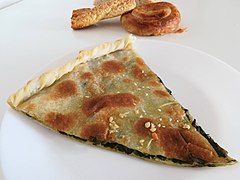
4. Soparnik: Croatia’s Oldest Pie
Soparnik, a simple but legendary dish, hails from Poljica, a small region near Split. Essentially a thin, savory pie filled with Swiss chard, garlic, and olive oil, Soparnik was once the humble meal of peasants but has since been granted protected cultural heritage status in Croatia.
Where to Try It:
- Soparnik Festival (Dugi Rat): If you visit in late July – head down the coast from Split, don’t miss this celebration of the traditional dish.
- Villa Spiza (Split): A charming spot that sometimes serves fresh Soparnik depending on the season.
Hands-On Experience: Take a cooking class in Poljica, a collection of 12 villages, where locals show you how to roll and bake the perfect Soparnik over an open fire.
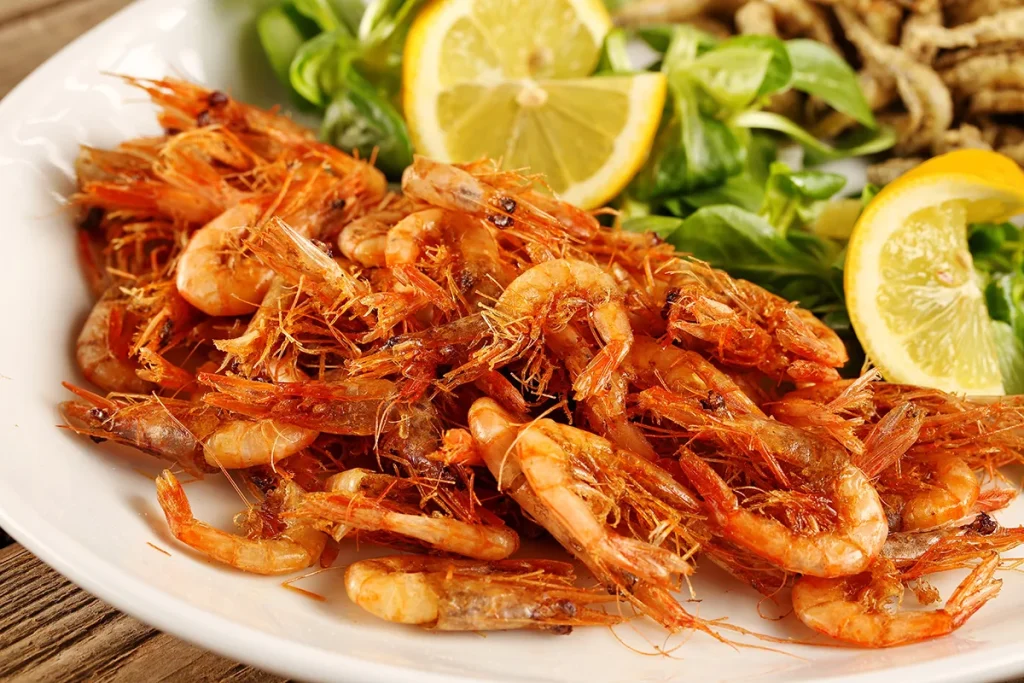
6. Buzara: The Dalmatian Seafood Classic
Buzara is a traditional Dalmatian seafood dish, typically made with mussels or prawns cooked in a simple but rich sauce of garlic, white wine, parsley, and olive oil. The word “buzara” refers to the method of cooking—simmering seafood in a flavorful broth, allowing the natural flavors of the Adriatic to shine. “Red” buzara includes tomatoes, “white” is without, some buzara feature Dalmatian prawns, others feature sweet local mussels.
Where to Try It
- Restaurant Badi (Lovrečica): Family owned but high end, with beautifully designed seafood plates. Choose from several varieties of buzara.
- Kaiser Restaurant (Zagreb): End your meal with the honey cake.
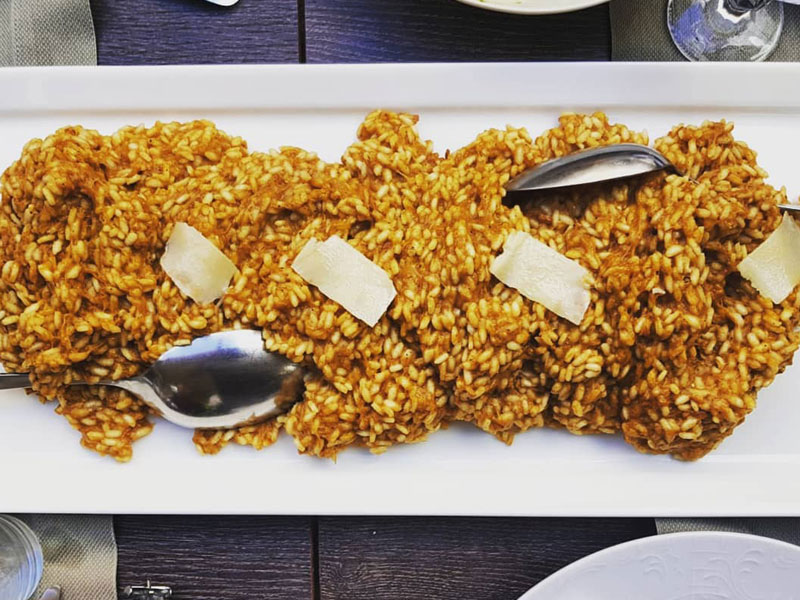
7. Skradin Risotto: A 12-Hour Labor of Love
Skradin Risotto is a dish with a deep-rooted tradition, originating centuries ago in the town of Skradin, a small town near Krka National Park. The dish is slow-cooked for over 12 hours, using veal, chicken, and a rich broth, resulting in a creamy, intensely flavorful risotto. The creaminess comes from the breakdown of starch over long, slow cooking, rather than the dish’s Italian cousins which typically rely on cream, butter or cheese.
What sets Skradin Risotto apart from other Dalmatian risottos is its long and meticulous cooking process. The dish is traditionally prepared only by men, following a centuries-old tradition where fathers, grandfathers, and brothers would take turns stirring the risotto during major celebrations, such as weddings and baptisms. The process of making Skradin Risotto is considered a test of patience and skill.
Where to Try It
- Konoba Cantinetta (Skradin): An authentic eatery famous for its Skradin Risotto.
- Konoba Vinko (Šibenik): A rustic setting with a family recipe that has been passed down for generations.
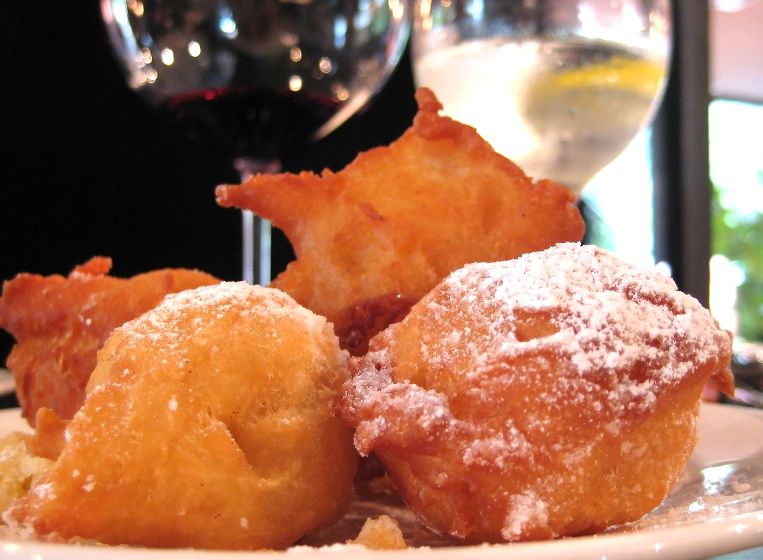
8. Fritule: Croatia’s Festive Doughnuts
Fritule are small, deep-fried dough balls, traditionally made during Christmas and other festive occasions in Croatia. They are flavored with rum, citrus zest, and sometimes raisins, creating a light and airy treat. The citrus is what generally sets this doughnut apart.
Many historians believe fritule are a descendant of the Venetian “fritole,” a similar fried dough dessert that was enjoyed in Venice as early as the Renaissance period. While fritule are most commonly associated with the Dalmatian coast and Istria, variations of this delightful dessert can be found throughout Croatia, each region adding its own unique touch.
Where to Try It
- Zagreb Christmas Market: The best time to enjoy these is during the winter festivities and the Zagreb Christmas Market is one of the best in Europe. You can visit from late November through the first week in January.
You’ll find this delicious treat at many bakeries, especially around the holidays – and on the costal towns like Rijeka, from take-away carts, topped with caramel, white chocolate, Nutella, and powdered sugar.
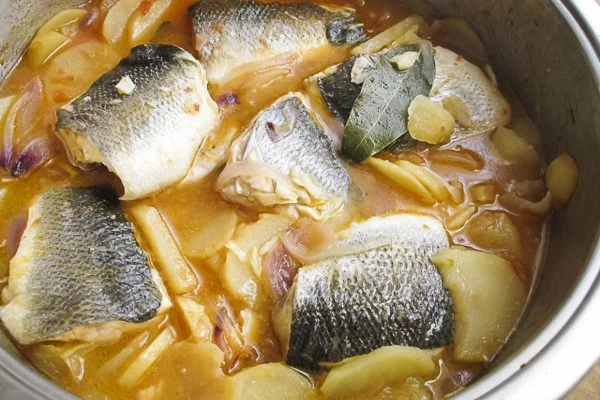
9. Gregada: Hvar’s Fisherman’s Stew
Gregada is a simple yet flavorful fish stew from the island of Hvar, made with white fish, potatoes, olive oil, garlic, and white wine. It is one of the oldest known fish dishes in Croatia, with roots tracing back to the ancient Greeks who settled on the island of Hvar around the 4th century BC.
Gregada is an example of a dish with only a few simple ingredients that can become sublime in the hands of a good cook – just fresh white fish like sea bass, slice potatoes, onion and garlic, bay leaves and parsley, white wine and, of course, olive oil. The secret is that the dish is never stirred, so as to keep the delicate white fish intact, the pot is gently shaken to distribute the flavors.
Where to Try It
- Konoba Menego (Hvar): A small, family-run konoba serving authentic island dishes.
- Konoba Ringo (Hvar): This little restaurant is a beautiful spot on the water with superb fresh seafood but not much digital presence – try the phone number for reservations: +385 91 510 3686.
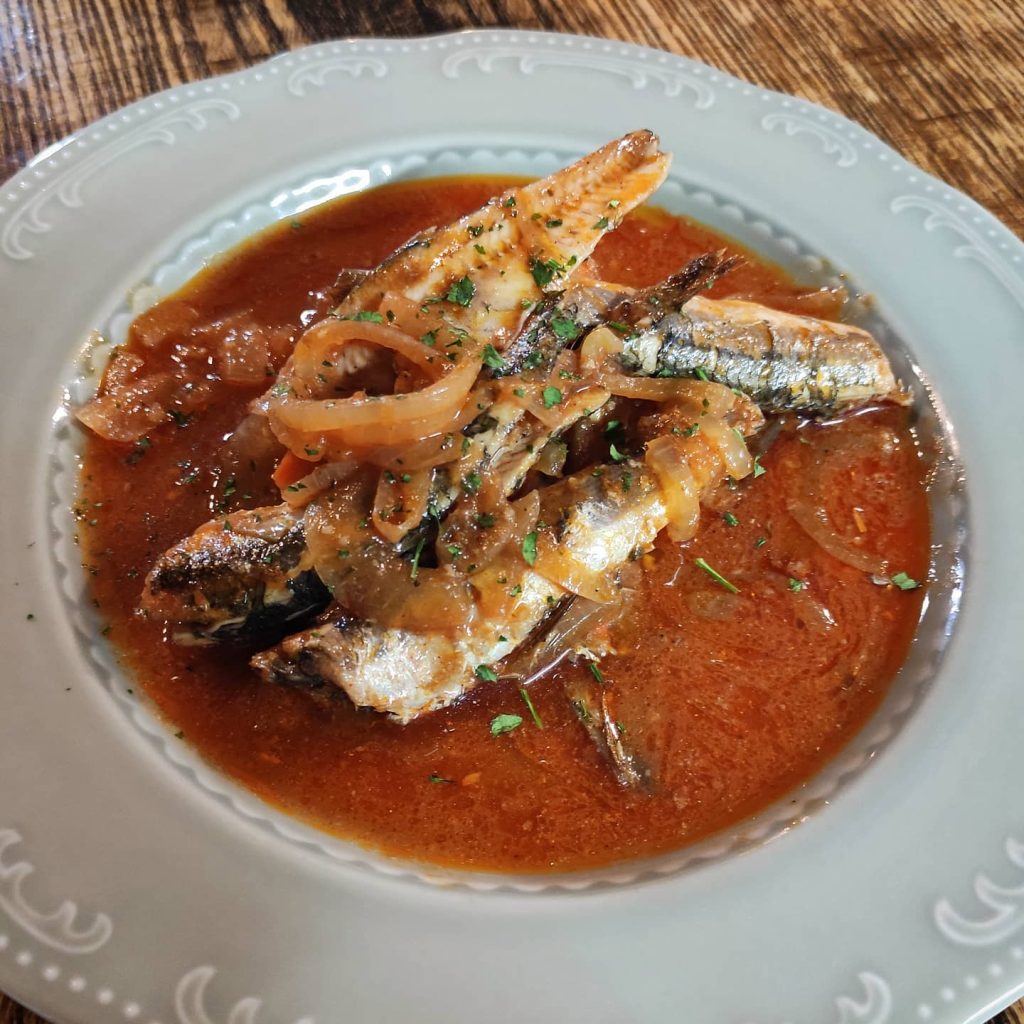
10. Brodet: Adriatic Fishermen’s Stew
Brodet is a traditional Dalmatian fish stew made with a mix of white fish, shellfish, and a tomato-based sauce, slow-cooked to perfection. This dish was historically prepared by fishermen using their daily catch. The dish likely evolved alongside similar Mediterranean seafood stews, such as Italy’s “brodetto” and France’s “bouillabaisse”, using a lot of the same ingredients as Gregada, with the addition of tomato.
Where to Try It
- Konoba Fetivi (Split): A cozy spot famous for its rich and hearty Brodet.
Conclusion: Savoring Croatia, One Bite at a Time
Croatia’s cuisine is as diverse as its landscape—hearty mountain stews, delicate seafood pastas, and centuries-old cheeses all tell the story of a country where history and flavor collide. Whether you’re savoring Peka in a countryside konoba or learning to make Soparnik with a local nonna, the real magic of Croatian food is in its authenticity.